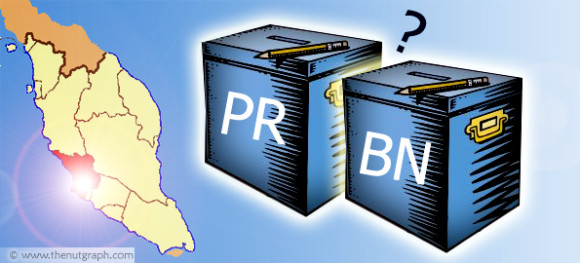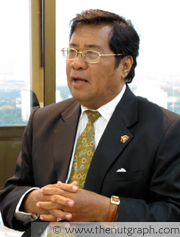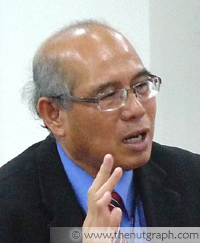SELANGOR is one of the hot states to watch in this general election. Both the Pakatan Rakyat (PR) and Barisan Nasional (BN) hope to regain the country’s richest and most populous state.
Unlike Penang, Selangor has traditionally been a BN stronghold. In 2004, the BN won all of Selangor’s 22 parliamentary constituencies and 54 of the 56 state seats. But in a dramatic turn in 2008, PKR, DAP and PAS jointly secured 36 of the state seats.
Five years on, should the PR be given a second term to administer the state? How do the two coalitions’ manifestos and candidates compare with each other? And what are the likely election outcomes?

The PR’s record
Over the past five years, the first-term PR state administration in Selangor instituted open tenders, enforced the Freedom of Information Enactment, and carried out several legislative reforms to restore its state assembly’s independence.
In 2008, the young coalition appointed four women into its state executive council and made Haniza Talha the first female deputy speaker in Selangor. The state went on to create history and appointed women to lead the Kuala Selangor District Council in 2011 and Petaling Jaya City Council in 2012.
Under the PR, the state government has also tabled balanced budgets except for 2009 due to the global financial crisis. Past Auditor-General Reports have praised the state’s financial management record, which saw Selangor’s reserves hitting a historic high of RM2.6 billion in January 2013.
Under former Menteri Besar Tan Sri Abdul Khalid Ibrahim, the administration also carried out several welfare initiatives. Aside from the better-known 20 cubic-metre free water programme, it was the first to moot and implement the idea of affordable housing for the state’s lower middle class.
It is hard to miss the striking similarities between the existing welfare programmes under Khalid’s administration and the promises made in the Selangor BN manifesto. Free water, affordable housing, cash incentives for newborns, free WiFi and free tuition for students are being promised to voters if they help the BN win back the state.

The BN also says it would lower assessment taxes – and that’s about where the similarity ends. It remains silent on local government elections, which PR state governments have struggled to reinstate due to restrictons in the federal Local Government Act. Penang has since brought the federal government to court, while Selangor experimented with village chief elections in 2011.
It is also uncertain if the BN will carry on the practice of open tenders and legislative reforms kick-started by the PR. In contrast, the PR in Selangor have pledged to continue improving the state’s governance, including setting up an autonomous legislative service commission that will restore the state assembly’s financial independence.
Candidates
The BN unveiled its list of candidates on 16 April 2013. It dropped tainted leaders such as former Menteri Besar Dr Mohd Khir Toyo and Datuk Mohd Satim Diman, but five of its candidates have since been accused of possessing bogus degrees.
And while the PR’s candidate for menteri besar is quite likely Khalid again if he wins, things on the BN side aren’t so clear. Glomac Bhd chief executive officer Datuk Fateh Iskandar, a high-profile Umno politician who was initially speculated to be the menteri besar-in-waiting, is not competing in the elections. So who will become Selangor’s menteri besar if the BN is voted in? Selangor BN coordinator Datuk Seri Mohd Zin Mohamed told The Star that four candidates had been shortlisted but remained tight-lipped about their identities.
Political scientist Dr Wong Chin Huat believes the BN’s lack of a clear menteri besar candidate will hamper its campaign in Selangor.
“Selangor is one the most urbanised states and voters’ expectations are higher. People will ask. The BN needs somebody who can clearly compete with Khalid,” he told The Nut Graph in an interview on 21 April 2013.
Najib’s influence
BN national chief Datuk Seri Najib Razak has appointed himself to lead the campaign in Selangor. But Universiti Malaya Centre for Democracy and Elections (UMCEDEL) director Prof Datuk Dr Mohd Redzuan Othman thinks Najib’s influence could be limited.

According to the centre’s latest survey among 1,407 voters in peninsular Malaysia from 3 to 20 April 2013, Najib is only slightly more popular than PR de facto leader Datuk Seri Anwar Ibrahim. The BN chief’s overall rating, at 54%, is only eight percentage points higher than Anwar’s 46%.
The study, which Mohd Redzuan presented to the press on 25 April 2013, also found the electorate’s general acceptance of the PR’s manifesto to be higher than BN’s manifesto.
Overall, the difference in support for both coalitions is only between three and five percentage points. Mohd Redzuan declined to reveal the exact figures but said both scored less than 50%. “It could swing both ways (on polling day),” he said.
The UMCEDEL survey did not focus separately on Selangor, but Mohd Redzuan told The Nut Graph that the state differed from other peninsular states with its high internet penetration rate. From previous surveys, the level of support for the PR has tended to be higher among voters who have access to the online media.
In 2008, most seats that fell to the PR were urban or semi-urban, while Umno retained most rural seats.
Forecast
Wong predicts that the PR has a strong chance of retaining Selangor barring “massive” electoral fraud.
Assuming state-wide Malay Malaysian voters’ support at 35%, Chinese support at 80%, Indian and other ethnicities’ support at 40%, and a similar voter turnout rate as in 2008, Wong calculated that the PR should still be able to win 34 seats.
“That’s a very conservative estimate, taking into account the effect of Najib’s goodies including BR1M (Bantuan Rakyat 1Malaysia),” he said. People in Selangor have benefited from Selangor PR’s welfare programmes as well, he added.
A more optimistic picture could see Malay support for the PR at 40%, and combined support from other ethnicities at 50%, thus enabling the PR to win more than 40 seats and secure a two-third majority in Selangor.
Still, some 25 state seats in Selangor are seeing three- to six-cornered fights with a flurry of independents and small parties in the fray. How will that affect the election outcome? Where former party members are contesting as independents, such as former Selangor DAP publicity secretary Jenice Lee and Sepang Umno Youth chief Datuk Suhaimi Mohd Ghazali, Wong said it would hinge on how far the political parties can pacify the disgruntled supporters.
“They may split vote for both sides,” he said. “It depends on the seats contested, but, in the bigger picture, I think they are not a threat (to the BN or PR).” ![]()

